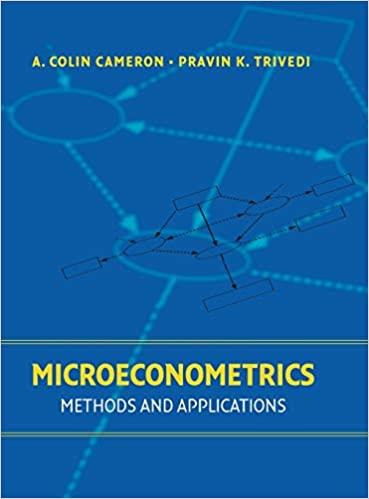For this problem use a (50 %) subsample of the data used in this chapter. (a) Estimate
Question:
For this problem use a \(50 \%\) subsample of the data used in this chapter.
(a) Estimate Poisson and negative binomial regression with MDU as the dependent variable and the following explanatory variable: LC, IDP, LINC, FEMALE, EDUDEC, XAGE, BLACK, HLTHG, HLTHF, and HLTHP. Carry out a likelihood ratio test of the null hypothesis that the variables LC and IDP have no effect on MDU.
(b) Test for overdispersion in the Poisson regression using the variance formulations (20.9) with \(g(\mu)=\mu\) and (20.10) with \(g(\mu)=\mu^{2}\) in this chapter. Which version of the variance formulation gets more support from the data? What do you conclude from this exercise?
(c) Estimate the negative binomial model (NB2). Compare the estimate of the overdispersion parameter with that in part (b). Explain the similarities and differences.
(d) Using the results from the negative binomial estimation, compare the estimated marginal effect of a change in LC for an average individual in excellent health (baseline) and an average individual in poor health \((H L T H P=1)\).
(e) For this Poisson specification estimate the "hurdle version" consisting of a zero part (logit or probit) and a positive part (truncated-at-zero Poisson). Compare these results with those from a regular Poisson model. Analyze the similarities and differences between the implications of the two models. Based on your analysis, which model do you regard as a better explanation of the data?
Step by Step Answer:

Microeconometrics Methods And Applications
ISBN: 9780521848053
1st Edition
Authors: A.Colin Cameron, Pravin K. Trivedi





